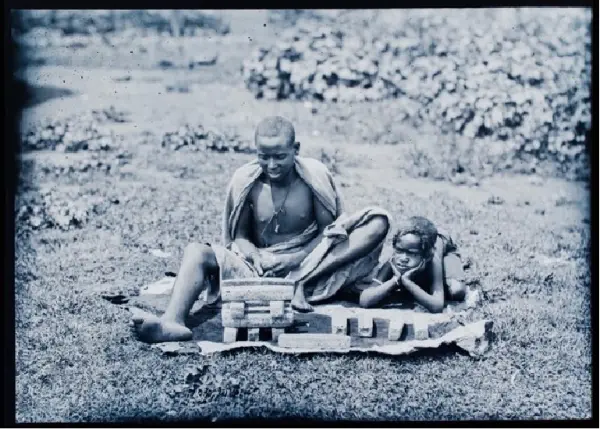
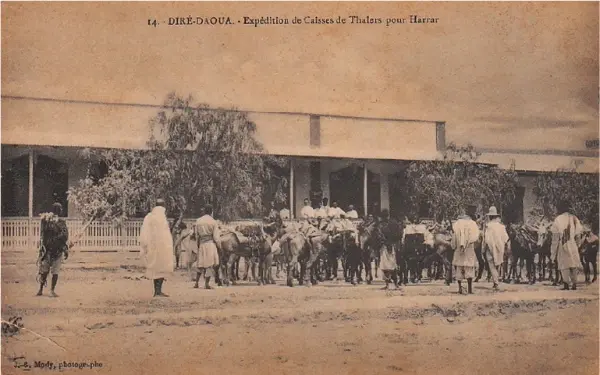
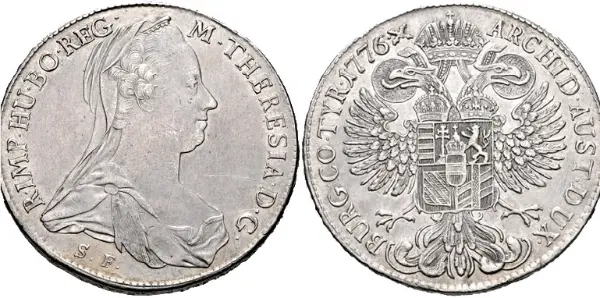
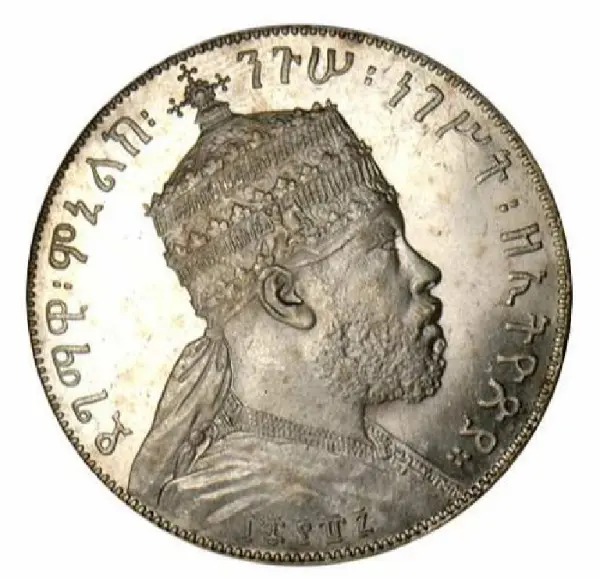
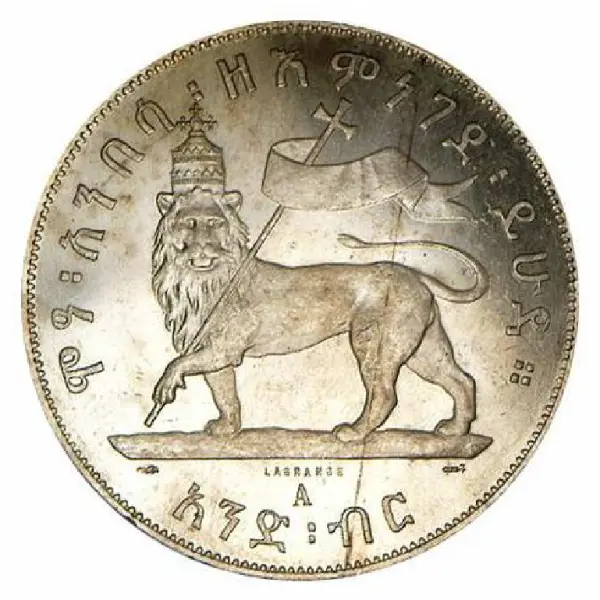
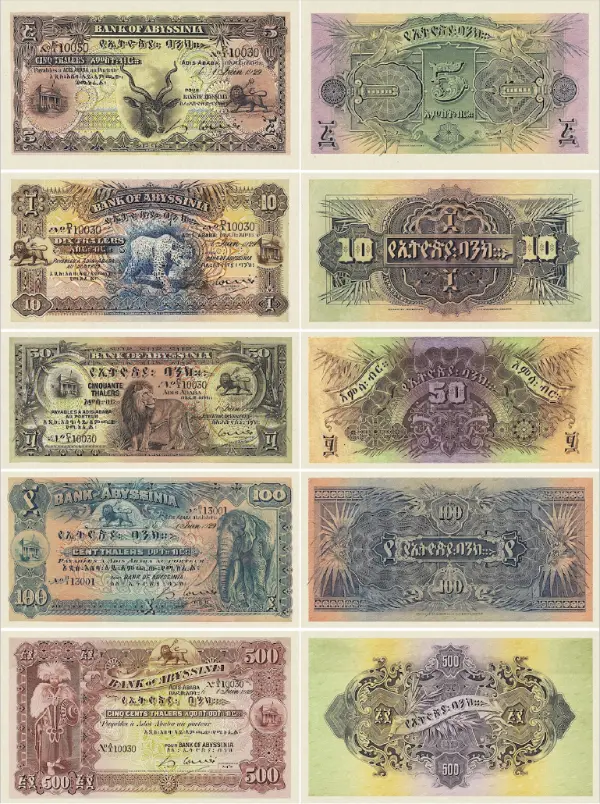
In 1931, Emperor Haile Selassie I formally requested that the international community use the name Ethiopia (as it had already been known internally for at least 1,600 years) instead of the exonym Abyssinia, and the issuing Bank of Abyssinia also became the Bank of Ethiopia. Thus, the pre-1931 currency could be considered the Abyssinian birr and the post-1931 currency the Ethiopian birr, although it was the same country and the same currency before and after.
Emperor Haile Selassie bought out the Bank of Abyssinia in 1931 for £235,000 in order to make it a purely Ethiopian institution. It was reorganized as Bank of Ethiopia. At the same time, the currency was decimalized and token nickel and copper coins were introduced, the birr becoming equal to 100 metonnyas (often written matonas). The text on the bank's notes appeared in Amharic, French, and English.
By the mid-1930s circulation consisted chiefly of Maria Theresa and Menelik talari.
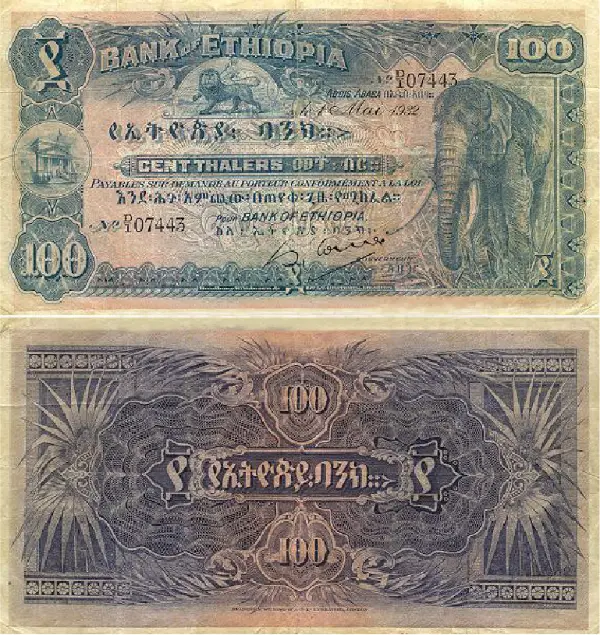
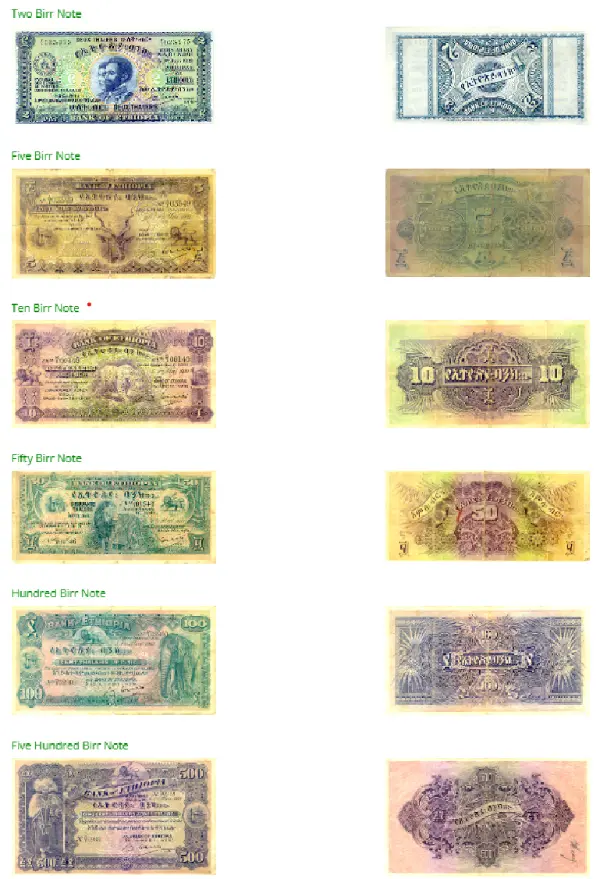
Not long after the Italian occupation and the attempted transformation of Ethiopia into Italian East Africa, the Italian lira was introduced (15 July 1936) and Ethiopian banknotes were withdrawn from circulation at 3 lire per talar (birr). In an effort to increase the use of Italian paper money, the exchange rate for silver coin (Maria Theresa thalers) was raised to 4.50 lire, then to 5.00, and eventually, in stages, to 13.50. Still, many people kept their Ethiopian coins and banknotes.
Regular Italian coins and banknotes of Banca d'Italia circulated after 15 July 1936. Special notes with a red overprint were authorized for Italian East Africa on 12 September 1938, and a large quantity was printed. It is not clear, however, when, where, and to what extent these special notes actually circulated.
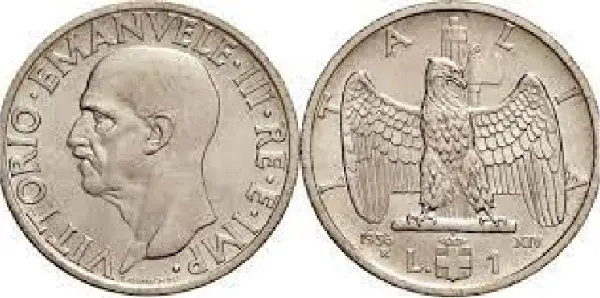
During the East African Campaign of 1941, British forces brought with them Indian, Egyptian, British, and British East African currency, and all were received in official payments. Italian coins and notes of up to 50 lire were allowed to continue in circulation to serve as small change; higher denominations were withdrawn at a rate of 24 lire per shilling. Maria Theresa thalers were allowed to circulate with a value of 1s 10+1⁄2d (or 45 lire). The East African shilling became the money of account on 1 July 1942; it eventually became the sole legal tender and remained so until 1945.
Regular notes of the East African Currency Board were used for circulation in Ethiopia.
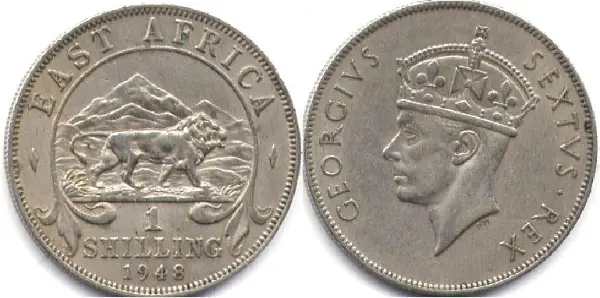
The birr was reintroduced in 1945 at a rate of 1 birr = 2 shillings. The name Ethiopian dollar was used in the English text on the banknotes. It was divided into 100 santim (derived from the French centime). The name birr became the official name, used in all languages, in 1976.
In 1944 (EE1936 in the Ethiopian calendar), coins were reintroduced, with copper 1, 5, 10 and 25 santim and silver 50 santim.
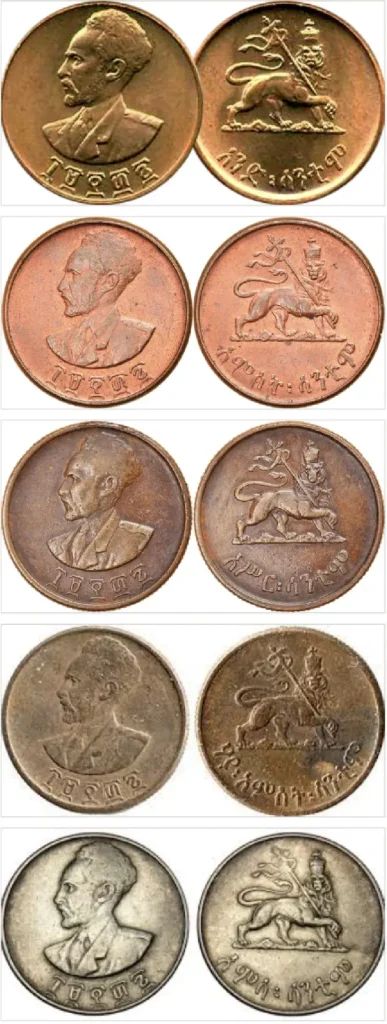
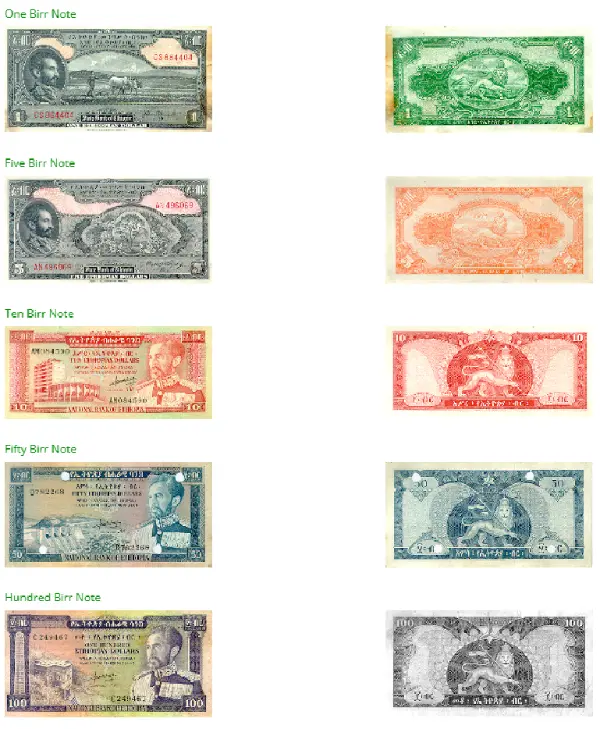
On September 1976, new notes were issued that fully changed the features of the emperor notes. These currencies remained in use till 1997.
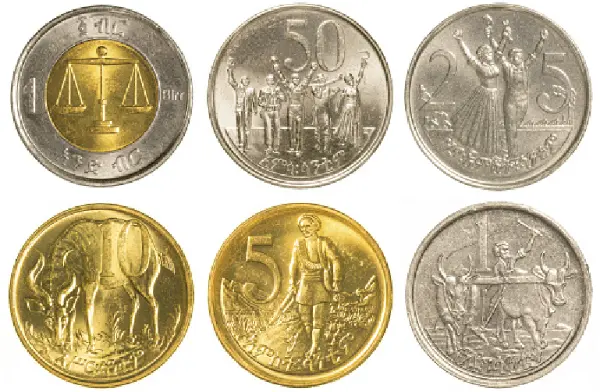
A second series of coins was issued in 1977 (EE1969). It consisted of aluminium 1 santim, brass 5 and 10 santim, cupro-nickel 25 and 50 santim, and bi-metallic 1 birr.A second series of coins was issued in 1977 (EE1969). It consisted of aluminium 1 santim, brass 5 and 10 santim, cupro-nickel 25 and 50 santim, and bi-metallic 1 birr.
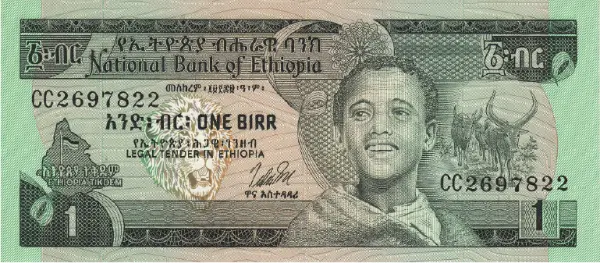
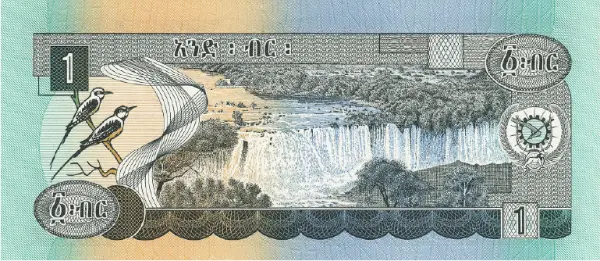
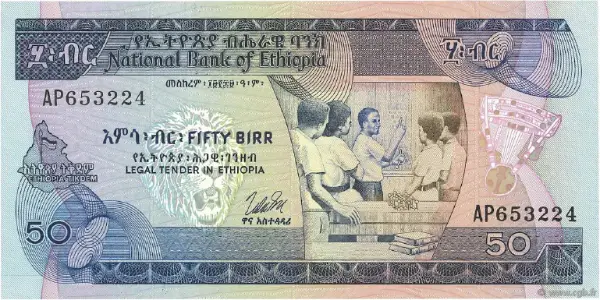
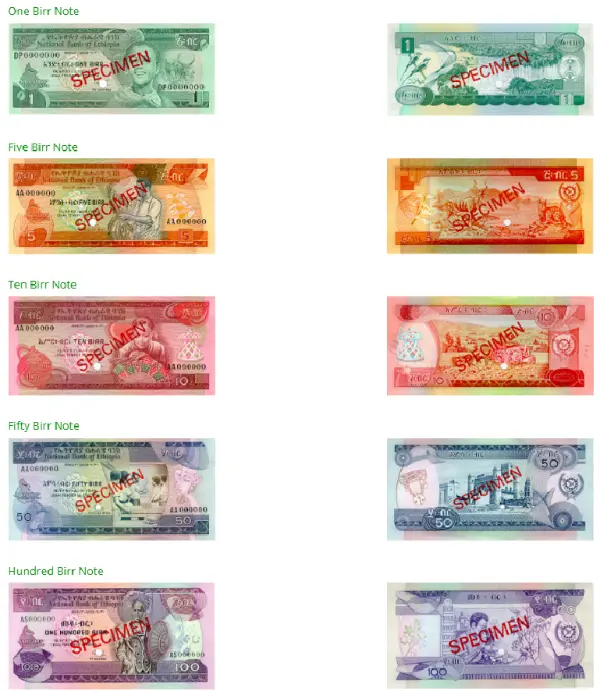
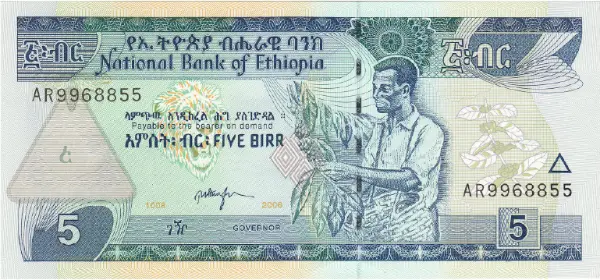
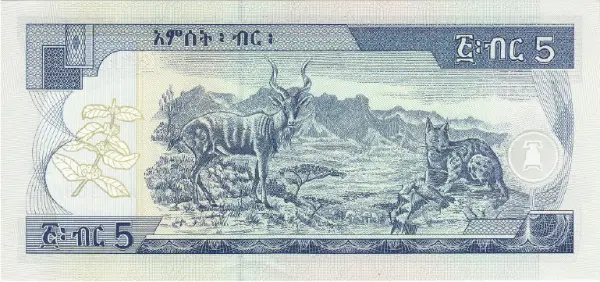
On September 14, 2020, new currency notes were introduced, with enhanced security features and other distinctive elements. The new currency notes replaced the 10, 50 and 100 bill notes while an additional 200 birr note was introduced.
The notes are reflective of the natural, historical features of the country besides anticipating the future strategies like industrialization and modern agriculture.

